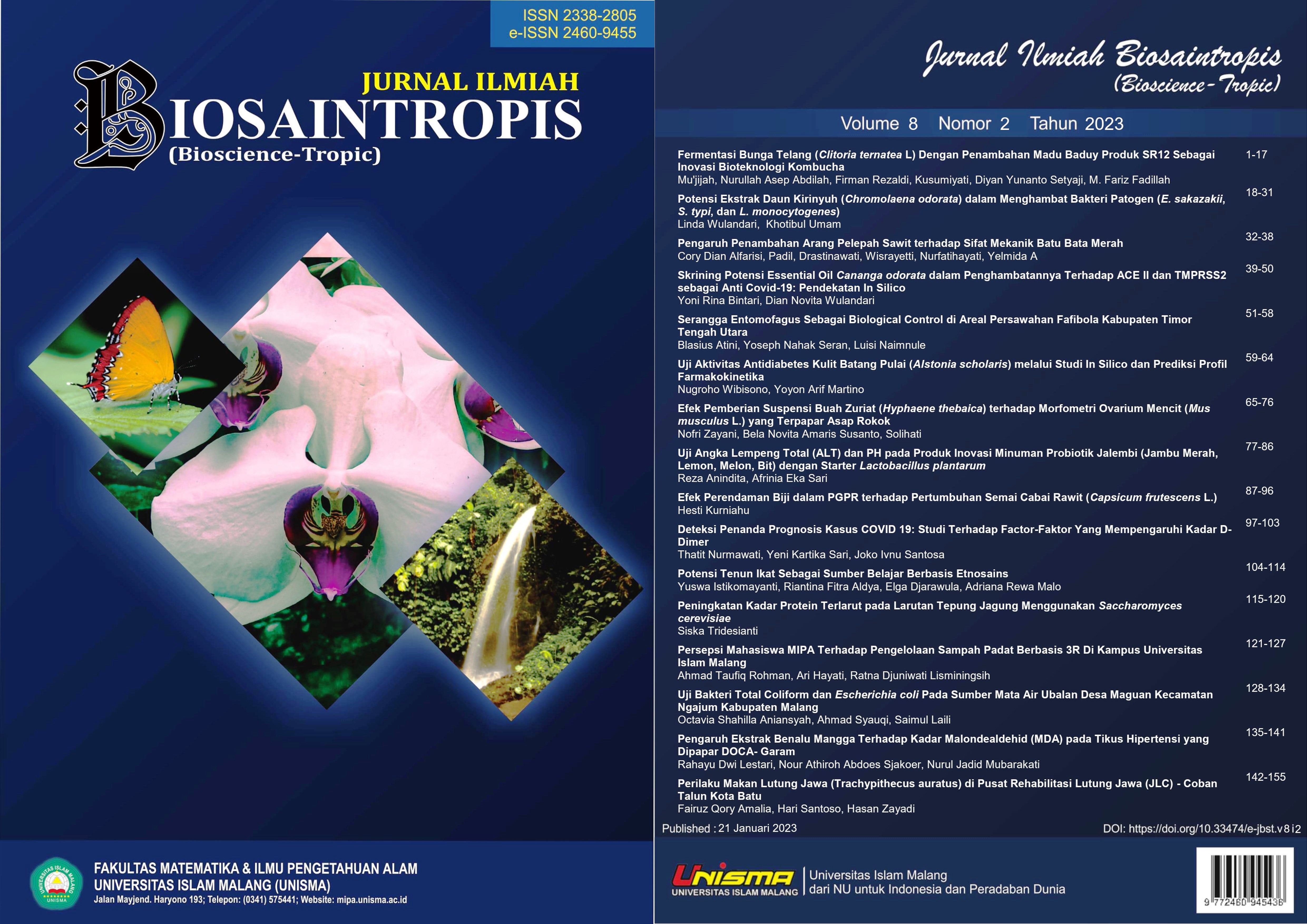Uji Aktivitas Antidiabetes Kulit Batang Pulai (Alstonia scholaris) melalui Studi In Silico dan Prediksi Profil Farmakokinetika
Main Article Content
Abstract
Alstonia scholaris is a medicinal plant from the Apocynaceae family. Alstonia scholaris stem bark have some medicinal properties, but their effect on antidiabetics mechanisms is still unclear. Alstonia scholaris stem bark have some active compounds such as Echitamine, Beta Sitosterol, Lupeol, Alpha Amyrin Acetate, and Betulinic Acid. Present study was designed to find out the best active compounds of A. scholaris as a potential therapeutics agent against diabetes mellitus. This study involved the molecular docking of 3D structures of those active compounds into GLUT-1 receptor protein, visualized their result using Biovia Discovery Studio and pharmacokinetics profile prediction analysis using pkCSM web page. The molecular docking result show that Echitamine (-8,7 kcal/mol) have the lower energy compared to glibenclamide (-9,6 kcal/mol). Based on pkCSM web page, Echitamine were have a good pharmacokinetics profile.
Article Details

This work is licensed under a Creative Commons Attribution 4.0 International License.
Copyright and Attribution:
Jurnal Biosaintropis (Bioscience-Tropici s licensed under a Creative Commons Attribution-NonCommercial 4.0 International License (CC-BY). The work has not been published before (except in the form of an abstract or part of a published lecture or thesis) and it is not under consideration for publication elsewhere. When the manuscript is accepted for publication in this journal, the authors agree to automatic transfer of the copyright to the publisher.
Permissions:
Authors wishing to include figures, tables, or text passages that have already been published elsewhere and by other authors are required to obtain permission from the copyright owner(s) for both the print and online format and to include evidence that such permission has been granted when submitting their papers. Any material received without such evidence will be assumed to originate from one of the authors.
Ethical matters:
Experiments with animals or involving human patients must have had prior approval from the appropriate ethics committee. A statement to this effect should be provided within the text at the appropriate place. Experiments involving plants or microorganisms taken from countries other than the authors™ own must have had the correct authorization for this exportation.

